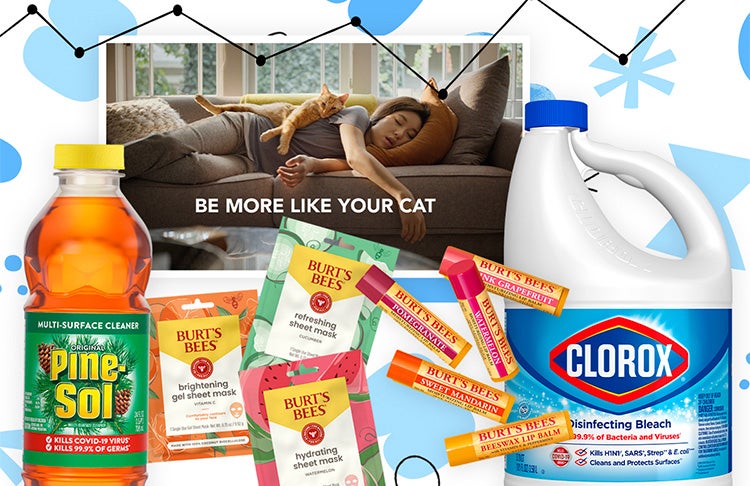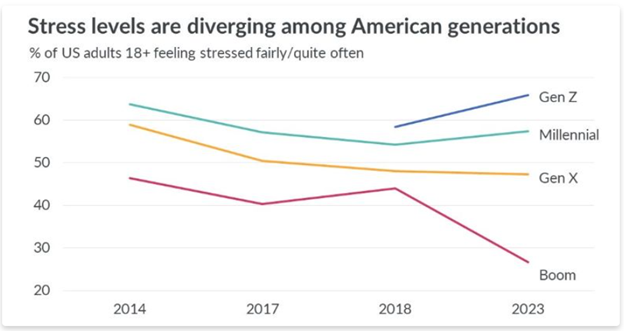Part 1: 2024 consumer outlook: From GDP to Skibidi Toilet

By Oksana Sobol, Senior Director, Insights, The Clorox Company
As head of insights at The Clorox Company, I’m always thinking about our consumers — how they’re feeling, how they’re spending their time and money, and what they’re prioritizing. As we start a new year, I want to share what we’re expecting to see in 2024, and how manufacturers and marketers can harness key themes to best serve ever-changing consumer needs.
In the first of this two-part series, we’ll focus on the external environment for consumers.
Here are some topline takeaways:
- The pandemic created both economic challenges and consumer resiliency.
- Pocketbook pressures continue to influence consumer sentiment and purchase choices despite improving economic indicators.
- The post-pandemic work environment has caused consumers to demand more job flexibility and become more protective of their personal time, turning to products that can help them perform tasks more easily.
- The economy has caused many to cut back on spending, but many Americans have still splurged on premium products and experiences that are meaningful to them.
Stressed but resilient

In 2024, consumers are adapting to new economic realities in a post-pandemic world. Despite macroeconomic indicators like inflation rate, GDP growth, employment and minimum wages looking stronger, consumer sentiment is still catching up. Many Americans are coping with pocketbook challenges: double-digit price increases, income not keeping pace with inflation, a decline in housing affordability, dwindling pandemic savings and mounting credit card debt. Add to this heightened international conflicts, sustained sense of economic uncertainty and what promises to be a volatile elections year around the world, and it’s clear why consumers are feeling stressed. Yet they also feel resilient, having navigated through several years of unprecedented challenges and gained confidence in their ability to move forward.
Consumer goods companies have been responsive to these constraints, offering options that deliver value in a number of different ways. For example, we’ve emphasized the versatility of Clorox Disinfecting Bleach and Pine-Sol products by showcasing the many ways these affordable options can clean and disinfect throughout the home. Of course, value is not just about low prices. It’s also about performance, versatility, and other factors demonstrating your products are worth paying for. At Clorox, we constantly measure overall value, with consumers today calling more than 60% of our portfolio superior.
Make my everyday life easier
Transitioning to the post-pandemic work environment is a driving force of change for many consumers. With more hybrid and remote work has come a greater desire for fluidity between work and life.
At the same time, consumers continue to place higher value on their personal time and are growing increasingly protective of it. As a result, products and tech that make routine daily tasks easier and faster and automate the mundane are surging in popularity. Our Fresh Step cat litter brand, for example, launched its Outstretch innovation with a campaign inviting cat owners to take a cue from their furry friends and “do less” — meaning use less litter and change it less often due to 50% more absorbent granules that last 50% longer.
The surge in online shopping fits right into this narrative, bringing greater convenience and breadth of choice to consumers. This channel continues to grow, with its share of online sales in total U.S. retail now exceeding 28%, according to NIQ.
The save-splurge paradox
Given the pace of inflation, consumers had to make significant adjustments to their consumption volume — including opting out of entire categories — to balance budgets. According to NIQ, this drove consumer packaged goods aggregate unit sales down 2.6% in 2023, with another 1.4% contraction expected in 2024.
At the same time, Americans have chosen to splurge on premium products and experiences that are meaningful to them. Nowhere was this more evident than with recent musical tours by iconic pop stars. Some of these tours uplifted local economies around the globe. According to The Wall Street Journal, concert ticket prices overall were up almost 20% in 2022 versus 2019, while concert attendance also grew 24% during that same period.
Despite consumer contraction in many everyday categories, discretionary spending in others has bucked that trend. For example, both travel and out-of-home entertainment have increased, 6% and 7%, respectively, while the share of food spending claimed by restaurants has gone up as well. Beauty has also been resistant to belt tightening, up 7%, including skincare at 10%, as consumers can have small splurges on products like our Burt’s Bees lip balm, face masks, and skin serums and toners to feel good without breaking the bank. In other words, even during tight economic times, consumers are willing to prioritize products and events that deliver extraordinary experiences and enrich their lives in meaningful ways.
Next: Top trends influencing today’s shopper




